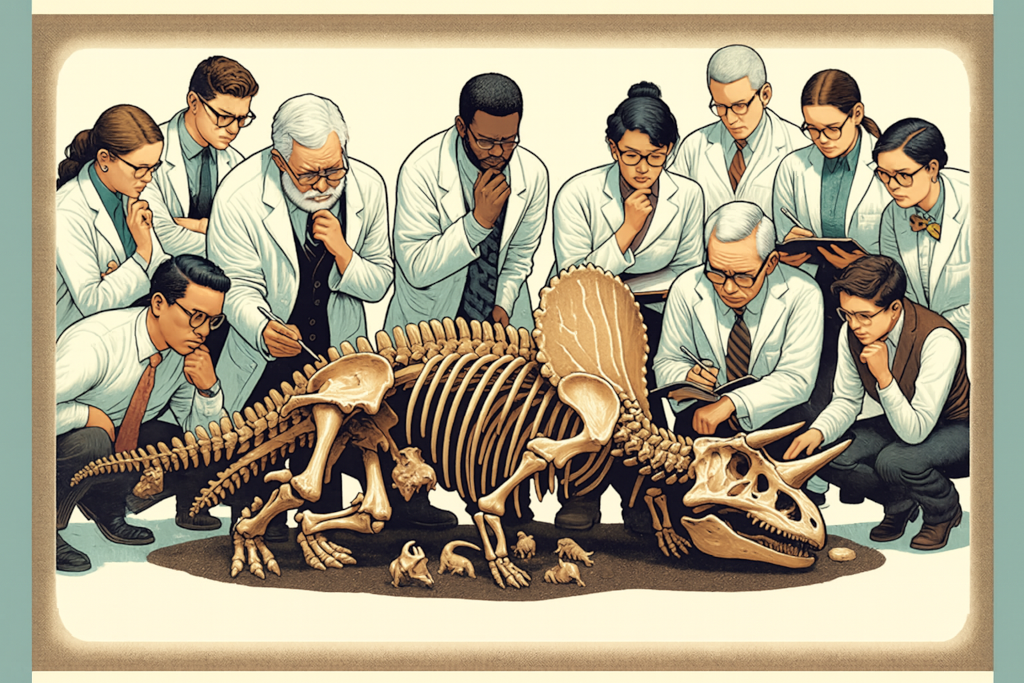Let’s be honest for a second—dinosaurs are fascinating because they’re massive, mysterious, and majestic. But there’s one question that tends to get whispered in science classrooms and Googled late at night: how did dinosaurs have sex?
It’s the prehistoric puzzle few talk about, but everyone’s curious about. And the answer? It’s far weirder (and more bird-like) than you might think.
The fossil that cracked open the conversation
Until recently, everything we knew about dinosaur reproduction was based on modern relatives—birds and crocodiles. Then, one exceptionally well-preserved fossil changed that. A Psittacosaurus—an early horned dinosaur about the size of a Labrador—was found with its cloaca intact.
Yes, you read that right. A cloaca. It’s the all-in-one opening used for peeing, pooping, and reproducing, just like in today’s birds and reptiles.
- Confirmed cloaca: This fossil provided the first direct fossil evidence of a dinosaur with a cloaca, confirming long-standing assumptions based on evolutionary links.
- Hidden anatomy: Like birds and crocs, the genitalia would have been tucked away inside—so forget any thoughts of visible dinosaur “equipment.”
The soft tissues involved in reproduction are rarely fossilized, which explains why this was such a groundbreaking discovery. Finding a cloaca is like stumbling across the Holy Grail of dinosaur anatomy.
So, how did dinosaur mating actually work?
Let’s talk theory, because fossil evidence is slim beyond that one Psittacosaurus. Scientists believe that male dinosaurs likely had an intermittent organ—a retractable phallus similar to some birds and reptiles—for internal fertilization.
But here’s the plot twist: there’s zero confirmed fossil evidence of a penis, a clitoris, or any external genitalia from dinosaurs. Not even a trace.
- No bones about it: Unlike mammals, dinosaurs didn’t have a baculum (a penis bone). Claims about sauropod bacula have been debunked.
- Sexual identity crisis: We can’t reliably tell male from female dinos, unless (and it’s rare) we find a fossilized egg inside the body.
The chicken and the crocodile: meet the dino’s closest relatives
To fill in the blanks, scientists turn to the next best thing: birds and crocodilians. Crocodiles have a penis-like organ despite having a cloaca. Most birds, on the other hand, get by with a “cloacal kiss,” where the male briefly presses his cloaca to the female’s to transfer sperm.
Which method did dinosaurs use? Both are possible. There’s even speculation that larger dinosaurs might’ve needed something more, well, substantial—especially when considering mating logistics between a multi-ton sauropod and its partner.
Why so little evidence?
Soft tissues just don’t fossilize easily. Muscles, organs, and genitalia are the first to decompose. Unless an animal is buried quickly in the perfect conditions—like during a landslide, or volcanic ashfall—we’re unlikely to see more examples like the Psittacosaurus fossil.
The cloaca discovery happened in 2022, and it stunned paleontologists and evolutionary biologists alike. Even then, determining the sex of that specimen was impossible—and the cloaca structure was broadly similar to that of today’s crocodiles, hinting at deep evolutionary roots.
Wait, so dinosaurs might’ve had cloacal kisses?
It’s possible. Or they might’ve had more elaborate methods depending on species, size, and behavior. We may never know for sure. But one thing is clear: their private lives were far more avian than anything you’d imagine from Jurassic Park.
The prehistoric takeaway
The truth is, we probably won’t find a fossilized dinosaur penis any time soon. But every fossil discovery—like that of the Psittacosaurus’s cloaca—gives us just a bit more insight into the lives of these ancient creatures.
So the next time you hear someone say, “We know everything about dinosaurs,” remember: we’ve barely begun to scratch the surface—especially when it comes to what happened behind closed (prehistoric) doors.




Leave a Comment